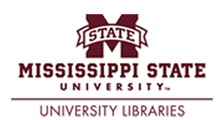
Theses and Dissertations
Issuing Body
Mississippi State University
Advisor
Zhang, Jilei
Committee Member
Xue, Yibin
Committee Member
Pittman Jr., U Charles
Committee Member
Toghiani, Hossein
Committee Member
Horstemeyer, F. Mark
Other Advisors or Committee Members
Lacy Jr., E. Thomas
Date of Degree
8-7-2010
Document Type
Dissertation - Open Access
Major
Forest Products
Degree Name
Doctor of Philosophy
College
College of Forest Resources
Department
Department of Sustainable Bioproducts
Abstract
Natural fibers have the potential to replace glass fibers in fiber-reinforced composite applications. However, the natural fibers’ intrinsic properties cause these issues: 1) the mechanical property variation; 2) moisture uptake by natural fibers and their composites; 3) lack of sound, cost-effective, environmentriendly fiber-matrix compounding processes; 4) incompatibility between natural fibers and polymer matrices; and 5) low heat-resistance of natural fibers and their composites. This dissertation systematically studied the use of kenaf bast fiber bundles, obtained via a mechanical retting method, as a light-weight reinforcement material for fiber-reinforced thermoset polymer composites for automotive applications. Kenaf bast fiber bundle tensile properties were tested, and the effects of locations in the kenaf plant, loading rates, retting methods, and high temperature treatments and their durations on kenaf bast fiber bundle tensile properties were evaluated. A process has been developed for fabricating high fiber loading kenaf bast fiber bundle-reinforced unsaturated polyester composites. The generated composites possessed high elastic moduli and their tensile strengths were close to specification requirements for glass fiber-reinforced sheet molding compounds. Effects of fiber loadings and lengths on resultant composite’s tensile properties were evaluated. Fiber loadings were very important for composite tensile modulus. Both fiber loadings and fiber lengths were important for composite tensile strengths. The distributions of composite tensile, flexural and impact strengths were analyzed. The 2-parameter Weibull model was found to be the most appropriate for describing the composite strength distributions and provided the most conservative design values. Kenaf-reinforced unsaturated polyester composites were also proved to be more cost-effective than glass fiber-reinforced SMCs at high fiber loadings. Kenaf bast fiber bundle-reinforced composite’s water absorption properties were tested. Surface-coating and edge-sealing significantly reduced composite water resistance properties. Encapsulation was a practical method to improve composite water resistance properties. The molding pressure and styrene concentrations on composite and matrix properties were evaluated. Laser and plasma treatment improved fiber-to-matrix adhesion.
URI
https://hdl.handle.net/11668/15278
Recommended Citation
Du, Yicheng, "An applied investigation of kenaf-based fiber/polymer composites as potential lightweight materials for automotive components" (2010). Theses and Dissertations. 476.
https://scholarsjunction.msstate.edu/td/476


